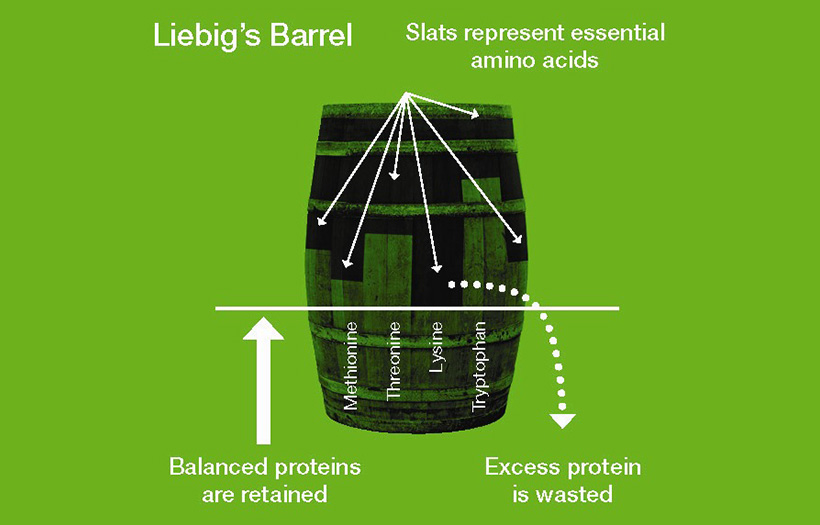Amino Acids in Horse Feeds

Most horse owners can quickly tell you the crude protein level in the feed they are giving their horses. But, what horse owners really need to know about, is the amino acid content. Protein is made up of amino acids – similar to how a chain is made up of links. There are two basic categories of amino acids: essential and non-essential. Essential amino acids must be provided in the diet, as the horse cannot manufacture them on their own in the digestive tract, where the non-essential amino acids can be manufactured.
There is another key thing to know when it comes to amino acids – there are “limiting” amino acids. This means that if a horse runs out of a “limiting” amino acid, it can’t utilize any of the remaining amino acids present in the feed. If the horse has enough of the first most limiting amino acid, but then runs out of the second most limiting amino acid, it can’t use the remaining amount of the third most limiting, and so on.
In horses, the first three most limiting amino acids, in order, are lysine, methionine, and threonine. Generally speaking, if these three amino acids are present in sufficient quantities, the ingredients used to provide them also provide the remaining amino acids in sufficient quantities. It is becoming increasingly common to see these three listed on the guaranteed analysis of horse feed tags, as it is an indication of the quality of the protein sources and the balanced nature of the feed.
